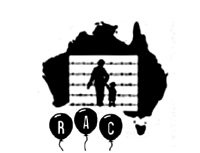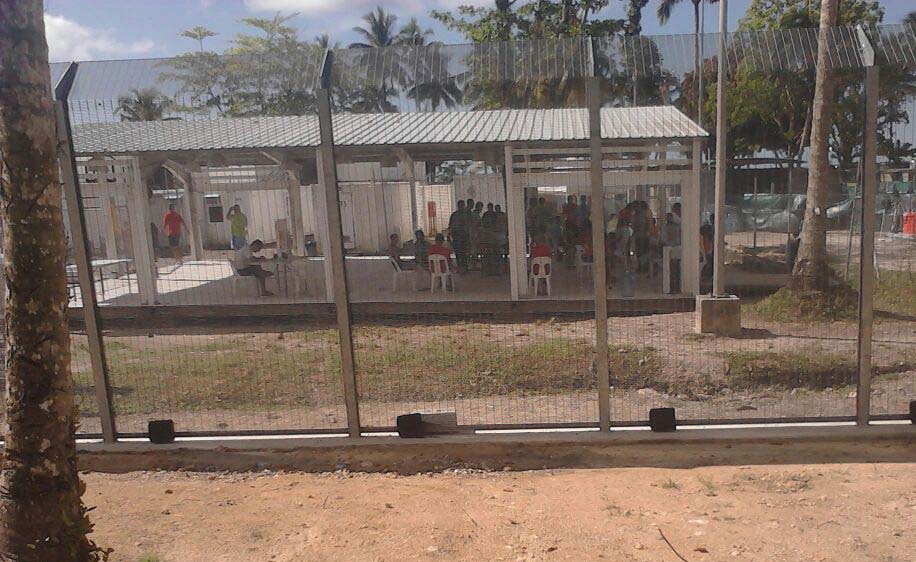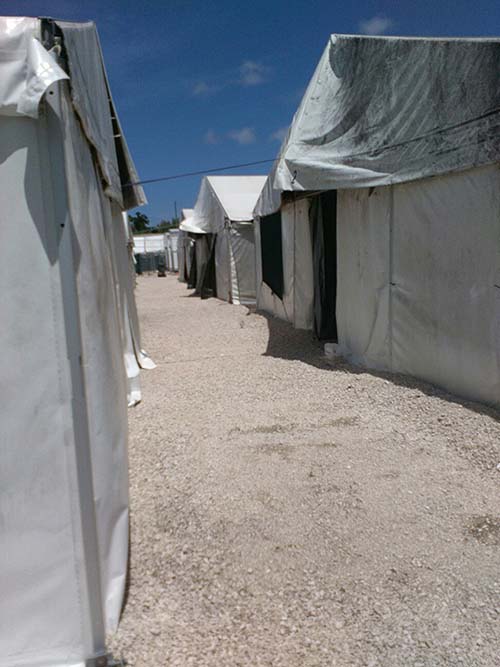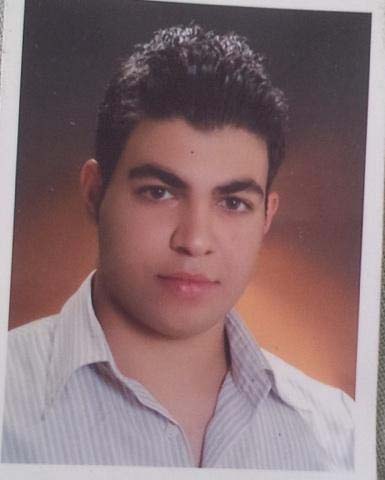Manus Island
Amnesty International described the situation on Manus Island as “tantamount to torture”, after visiting the centre in November 2013.
In February 2014 Reza Barati was murdered in the Manus Island detention centre during an attack on asylum seekers by PNG guards. During the attack another man was shot in the hip and others lost eyes. Threats from locals against the asylum seekers continue.
In November 2017 the refugees were forced out of the old detention centre, after PNG immigration and police used metal bars, fists and knives. After over four years in detention, they had refused to be transferred simply to another prison camp. Behrouz Boochani, a refugee there, wrote that what they wanted was, “one thing, and one thing only, and that is freedom.”
They were moved to three new camps closer to the Lorengau township. There may be fences but because people are forced to go to the Lorengau settlement area for food and medications, they are vulnerable to attack.
A Human Rights Watch report in October 2017 documented these assaults. One man nearly lost his arm following a machete attack. An Iranian asylum seeker suffered a fractured skull after an attack with a metal rod as his phone and money were stolen.
Medical and other services were already grossly inadequate. In August 2014 a second asylum seeker, Hamid Kehazaei, died after a simple skin infection developed into septicaemia. In December 2016 Faysal Ahmed died after requesting medical treatment 13 times in two months.
Former Manus Island doctor John Vallentine told the ABC’s Four Corners that the centre was “just a disaster, medically”, saying it was just “too remote” to provide proper services there.
In all seven refugees and asylum seekers have now died there: : Reza, Hamid, Faysal, Kamil Hussein by drowning, Hamed Shamshiripour, Salim, and a Tamil refugee by suicide.
Infections and skin diseases are rife among the asylum seekers on Manus Island. About one in six people living on Manus Island contract malaria each year, and SBS reported a typhoid outbreak in April 2019.
Medical services have now been reduced further with the closure of the old detention centre. There is now no mental health treatment at all.
On 26 April 2016 the PNG Supreme Court held that detention on Manus Island was unlawful and the detention centre would have to close. Both PNG and Australia have refused to act on the ruling.
Read about the stories of Manus refugees in Fairfax’s special “No end in sight” multimedia report here
Conditions on Nauru
On Nauru, according to Dr Robert Adler, a paediatric psychiatrist who worked there providing medical services in 2015, “Families were living under a marquee, separated from one another with plastic sheets, with no easily accessible toilet or kitchen facilities, no privacy and no air-conditioning in 40 degree heat”.
Since late 2014 there have been a series of bashings, robberies and rapes on asylum seekers and refugees, as locals blame them for “taking jobs” and bringing high-handed Australian expats to their island. Five asylum seekers have died on Nauru since 2014.
The change to an “open centre” arrangement, where the detention centre gates are open, has changed little. There is no other accommodation outside the centres for people to move to. There is not enough transport to take more than a fraction of the asylum seekers out of the camp at any one time. And many are too afraid to leave the camps because of the threat of bashings and rape.
See more photos of life on Nauru at The Guardian website here from May 2015
Nauru’s war on refugee women
In 2015 Lateline recorded 20 rapes or sexual assaults of refugee women on Nauru.
Nazanin, an Iranian asylum seeker raped in May 2015, was only brought to Australia in August that year. Recommendations from doctors in Australia and Nauru that Nazanin’s brother and mother be brought to Australia to aid her recovery have been ignored by the Immigration Department.
The case of Abyan, the raped Somali refugee, exposed the lies and brutal mistreatment of refugees by the Minister for Immigration, Peter Dutton and the Immigration Department. The Guardian reported that he ignored three separate IHMS recommendations to transfer Abyan, the first on 16 September 2015, confirming advocates’ version of events.
Justice for Reza Barati: Murdered on Manus
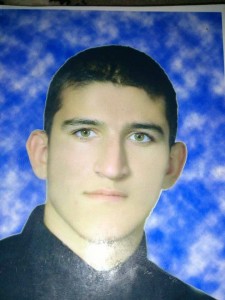
On 17 February, local G4S personnel brutally attacked asylum seekers on Manus Island, armed with guns, machetes, pipes and sticks. A fence was pushed down from outside, enabling PNG Police and the PNG ‘mobile squad’ to enter the facility.
This resulted in the murder of Reza Barati, a 23-year-old Faili Kurd from Iran, and injuries to at least 62 other asylum seekers. One man was shot in the hip and others have lost eyes.
This account has been confirmed by several eyewitnesses including Azita Bokan, an Immigration Department interpreter who told the media, “There was blood everywhere. The number injured was horrific: people with massive head injuries, at least one with a slashed throat.”1
This was an act of retribution against asylum seekers after they had been holding protests for a month, demanding that the processing of their claims begin. The day before there had been a major protest where 35 asylum seekers broke out of the detention centre. But on the night of the attacks there was only one small protest hours before the attack by 30-50 asylum seekers in a different compound from where the murder took place. Yet the media still wrongly refers to the event as a “riot”.
Who was to blame?
Although the attacks were carried out by PNG personnel, responsibility ultimately lies with the Australian government. The detention centre is funded and run by Australian authorities. This is blood on Immigration Minister Scott Morrison and Tony Abbott’s hands.
There is also blood on Labor’s hands. The Labor government re-opened Manus Island in November 2012 and Reza Barati was sent there by the Rudd government in August last year.
Hamid Kehazaei
Hamid died from a simple skin infection that turned into septicaemia on Manus Island in August 2014. Medical documents leaked to the media confirm that negligence and inadequate care caused his death.
The young man was already very ill, and deteriorating, before finally receiving, on August 23, the medical attention he’d requested. For the next two days Kehazaei’s condition “worsened considerably”, according to his medical report.
Medical staff on the island finally recommended to the Immigration Department that he be “urgently transferred” to Port Moresby rather than continue to receive inadequate treatment on Manus. But this didn’t happen, for over 24 hours.
The plan to transfer the patient the previous day “never came to fruition due to delay/visa requirements, so the patient spent another night”’ on Manus Island, The Australian reported.
The newspaper obtained IHMS medical documents that “show that the federal government was aware Kehazaei’s condition could be ‘life threatening’”. By the time Kehazaei arrived in Port Moresby it was too late. He suffered a heart attack, and was transferred Brisbane’s Mater Hospital the next day. His family agreed to turn off his life support when he was confirmed brain dead.
Medical staff failed to use the correct anti-biotics recommended by PNG health guidelines, according to Australian Medical Association federal councillor Richard Kidd. If they had, he would likely have survived.
If the Immigration Department had been both competent and compassionate someone would have ensured that a visa was immediately available on hearing of the transfer recommendation.
It would have ensured that the medical treatment offered on Manus in the first place was of a standard appropriate to the cramped, dangerous conditions that prevail there, to the detriment of detainees’ health, both physical and psychological.
Immigration Minister Scott Morrison’s claim that Kehazaei received “outstanding treatment” was blown out of the water by The Australian’s report. He explicitly denied Hamid had been mistreated, but the IHMS reports clearly show that he was. Once again, Morrison lied to the public.
